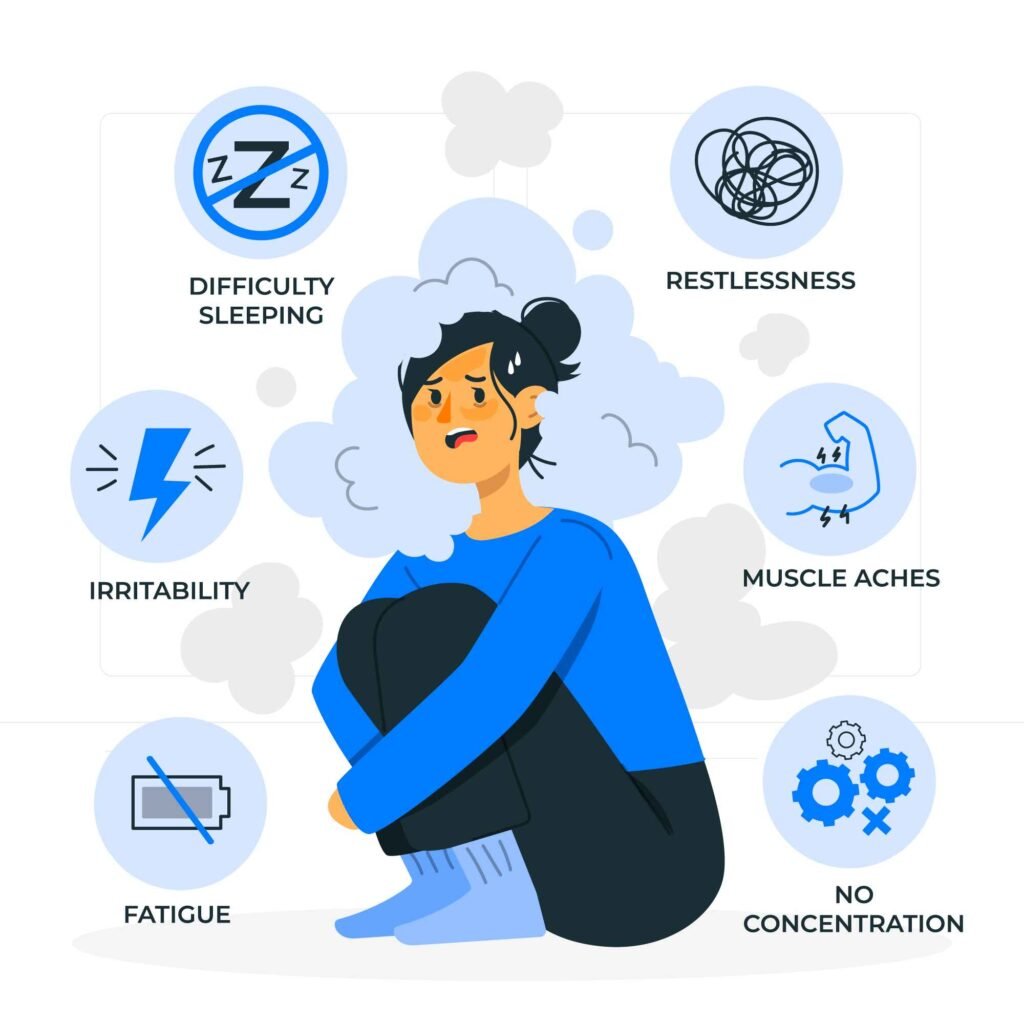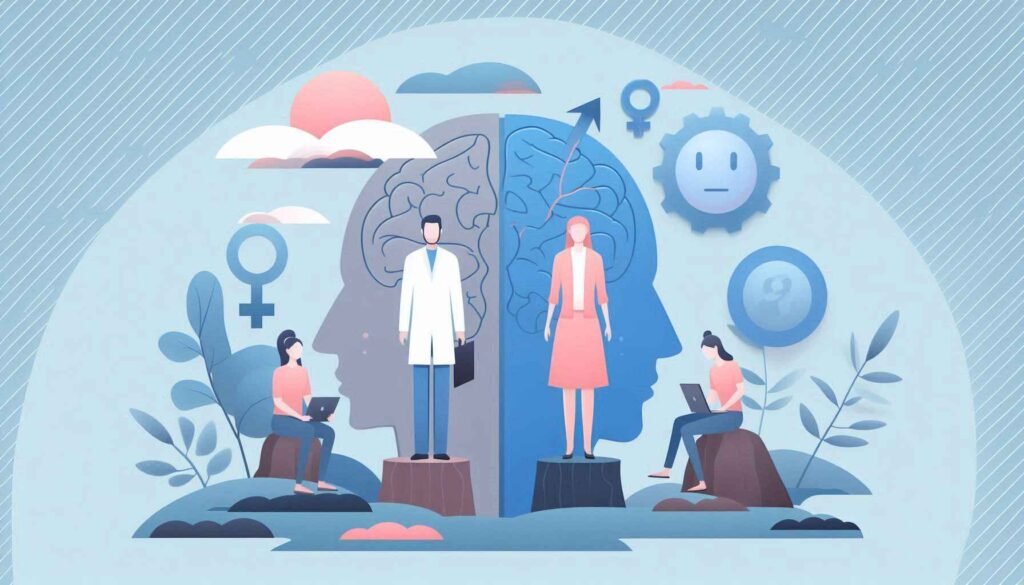
Innovative Technologies in Mental Health Treatment
Introduction: The Role of Technology in Mental Health Care
Mental health care has witnessed a transformative evolution with the integration of technology. From diagnosis to therapy, innovative solutions are shaping how professionals and patients approach mental health challenges. The rise of digital tools, artificial intelligence (AI), and virtual platforms has made treatment more accessible, personalized, and effective.
In this blog, we explore groundbreaking technologies revolutionizing mental health care, shedding light on how they enhance patient outcomes. Let’s delve into the first half of this comprehensive overview.
Section 1: The Emergence of Digital Mental Health Tools
1.1 Mobile Apps for Mental Health Management
Mobile apps have become a cornerstone of modern mental health care, offering a convenient platform for self-help, therapy, and monitoring. Popular mental health apps like Calm and Headspace focus on mindfulness, meditation, and stress management. Meanwhile, platforms like BetterHelp and Talkspace provide access to licensed therapists via text, video, or audio.
These apps often include features such as:
- Mood Tracking: Allowing users to log emotions and identify triggers.
- Cognitive Behavioral Therapy (CBT) Exercises: Guiding individuals through proven techniques to address anxiety or depression.
- Daily Reminders: Encouraging consistent self-care practices.
1.2 AI-Powered Chatbots: The New Age Listener
Artificial intelligence is bridging the gap in mental health care by offering immediate support through chatbots. AI-powered platforms like Woebot utilize cognitive-behavioral principles to interact with users, providing conversational support and coping strategies. These chatbots are not only cost-effective but also available 24/7, offering an empathetic ear when human help may not be accessible.
1.3 Wearable Technology: Monitoring Mental Well-Being
Wearables like smartwatches and fitness trackers are evolving beyond physical health metrics. Devices now monitor stress levels, sleep patterns, and heart rate variability, providing valuable insights into mental health. Platforms like Apple Health and Fitbit incorporate mental well-being tracking, empowering users to take preventive measures.
Key Benefits of Wearables:
- Real-time data collection for personalized insights.
- Integration with mental health apps for seamless care.
- Alerts for unusual patterns indicating mental distress.
Section 2: Virtual and Augmented Reality in Therapy
2.1 Virtual Reality (VR) for Exposure Therapy
Virtual reality is revolutionizing how mental health professionals conduct exposure therapy for conditions like PTSD, phobias, and anxiety disorders. By simulating controlled environments, VR allows patients to confront their fears in a safe, immersive setting.
For instance:
- A patient with a fear of flying can virtually board an airplane.
- Individuals dealing with PTSD can revisit traumatic events under guided supervision.
2.2 Augmented Reality (AR) for Skill Building
Augmented reality takes therapy a step further by integrating therapeutic exercises into the real world. AR apps like SuperBetter encourage resilience-building and emotional strength by gamifying mental health tasks.
Example: Gamified AR exercises for social anxiety may involve virtual prompts for initiating real-life conversations, fostering confidence and communication skills.
2.3 VR Relaxation Techniques
VR isn’t just about exposure; it’s also a tool for relaxation and mindfulness. Guided VR meditations transport users to serene landscapes, reducing stress and improving focus. This immersive experience provides an unparalleled way to disconnect from daily pressures and reconnect with inner peace.
Section 3: Artificial Intelligence and Machine Learning in Mental Health
3.1 AI for Early Diagnosis and Prediction of Mental Health Issues
Artificial intelligence (AI) is transforming the way mental health conditions are diagnosed and predicted. AI algorithms can analyze vast amounts of data, identifying subtle patterns in behavior, speech, or writing that might indicate a mental health disorder before traditional symptoms appear.
How It Works:
- Text and Voice Analysis: AI can analyze social media posts, emails, or voice recordings to detect changes in tone, language, or sentiment that may suggest depression or anxiety.
- Predictive Analytics: By assessing historical data, AI can predict the likelihood of someone developing conditions like PTSD or bipolar disorder.
Early diagnosis means timely intervention, potentially preventing more severe mental health challenges. Companies are developing AI-driven platforms to assist therapists by providing real-time analysis and recommendations based on patient data.
3.2 Personalized Treatment Plans with Machine Learning
Every individual’s mental health journey is unique. Machine learning helps create personalized treatment plans by analyzing data from various patients and understanding what works best for specific symptoms or personality types.
Benefits of Personalized Plans:
- Tailored Therapies: Rather than a one-size-fits-all approach, AI helps recommend therapy types (CBT, DBT, mindfulness) based on individual needs.
- Adaptive Recommendations: AI learns from a patient’s progress, adapting the treatment plan as therapy continues.
These technologies ensure patients receive care that resonates with their personal experience, improving engagement and treatment outcomes.
3.3 AI-Powered Sentiment Analysis in Therapy Sessions
During therapy sessions, AI tools can provide real-time sentiment analysis by observing speech patterns, facial expressions, or body language. This technology gives therapists additional insights into their patients’ emotional states, helping them address unspoken concerns.
For example:
- Voice Stress Analysis: Detects anxiety or discomfort through subtle changes in tone.
- Emotion Detection Software: Identifies emotions such as sadness, frustration, or anger, even when not explicitly stated.
By leveraging these insights, therapists can fine-tune their approach and provide more effective support.
Section 4: Big Data and Mental Health Insights
4.1 Harnessing Big Data to Understand Mental Health Trends
Big data is playing a pivotal role in uncovering patterns and trends related to mental health. By analyzing millions of data points from health records, surveys, social media, and wearable devices, researchers can gain a deeper understanding of mental health issues on a societal level.
Key Applications:
- Identifying Risk Factors: Big data can reveal correlations between lifestyle, genetics, and mental health conditions.
- Public Health Initiatives: Insights from big data help governments and organizations design targeted mental health programs and campaigns.
For instance, during the COVID-19 pandemic, big data analysis highlighted the surge in anxiety and depression, prompting timely mental health support initiatives.
4.2 Predictive Models for Mental Health Crises
Predictive analytics, powered by big data, helps anticipate mental health crises before they occur. These models can analyze patterns from patient records, social interactions, and even biometric data to identify warning signs.
Examples of Predictive Tools:
- Suicide Prevention Models: Platforms that assess risk factors and alert mental health professionals when someone is at high risk.
- Crisis Response Systems: AI-driven tools that guide immediate interventions, ensuring patients receive the support they need before a crisis escalates.
By preventing crises, these tools save lives and reduce the burden on healthcare systems.
4.3 Data Privacy and Ethical Concerns
With the use of big data and AI in mental health, data privacy is a critical concern. Patients must trust that their sensitive information is protected. Organizations are focusing on:
- Data Anonymization: Ensuring patient data cannot be traced back to individuals.
- Compliance with Regulations: Adhering to laws like GDPR and HIPAA for data protection.
Ensuring ethical practices in big data use builds confidence in these innovative technologies.
Section 5: The Future of Mental Health Care: What Lies Ahead?
5.1 Brain-Computer Interfaces (BCIs) for Mental Health
Brain-computer interfaces are at the forefront of mental health innovation. BCIs can directly measure brain activity and translate these signals into actionable insights for treatment. This technology holds promise for conditions like depression, anxiety, and even schizophrenia.
Potential Applications:
- Neural Feedback Therapy: Patients can receive real-time feedback on their brain activity, helping them learn to manage emotions more effectively.
- Enhanced Diagnosis: BCIs could offer a new way to diagnose mental health disorders by directly assessing brain function.
5.2 Digital Twins for Personalized Mental Health
A digital twin is a virtual representation of an individual’s mental and physical health. By creating a digital model of a patient, therapists can simulate different treatments to determine the most effective approach.
Benefits:
- Accurate Simulations: Test various therapies virtually before applying them in real life.
- Minimized Trial and Error: Reduces the risk of ineffective treatments by predicting outcomes.
5.3 Telepsychiatry: Expanding Global Access to Care
Telepsychiatry is set to become even more sophisticated with advancements in technology. High-quality video consultations, AI-driven diagnostic tools, and secure platforms are making mental health care accessible to remote and underserved areas.
Future Enhancements:
- Virtual Reality Consultations: Offering more immersive and engaging therapy experiences.
- Multilingual AI Interpreters: Breaking language barriers and expanding care globally.
5.4 Blockchain for Secure Mental Health Records
Blockchain technology promises to revolutionize how mental health records are stored and shared. By providing secure, immutable, and transparent records, patients can have greater control over their data.
Advantages of Blockchain:
- Enhanced Security: Protects against unauthorized data access.
- Patient Ownership: Allows patients to decide who can access their mental health information.
Innovative Technologies in Mental Health Treatment: The Future is Now
Section 6: Neurotechnology and Brain Stimulation Therapies
6.1 Transcranial Magnetic Stimulation (TMS) for Depression
Transcranial Magnetic Stimulation (TMS) is a non-invasive treatment that uses magnetic fields to stimulate nerve cells in the brain. This therapy has shown remarkable results in treating treatment-resistant depression.
How TMS Works:
- An electromagnetic coil is placed near the patient’s scalp.
- The magnetic pulses stimulate areas of the brain linked to mood regulation.
- Over time, these sessions help reduce symptoms of depression and anxiety.
Benefits of TMS:
- Non-Invasive: No need for surgery or sedation.
- Minimal Side Effects: Compared to medications, TMS has fewer side effects like weight gain or fatigue.
- Quick Sessions: Each session typically lasts 30-40 minutes, allowing patients to resume their daily activities.
6.2 Deep Brain Stimulation (DBS) for Severe Mental Health Disorders
Deep Brain Stimulation (DBS) involves implanting electrodes into specific areas of the brain to regulate abnormal activity. Originally used for Parkinson’s disease, DBS is now being explored for severe depression, OCD, and even addiction.
Potential Applications:
- Treatment-Resistant Depression: Helping patients who haven’t responded to other therapies.
- Obsessive-Compulsive Disorder (OCD): Reducing compulsive behaviors and intrusive thoughts.
- Addiction Recovery: Modulating brain circuits involved in reward and impulse control.
Though still largely experimental, DBS shows promise for those with severe, debilitating mental health conditions.
6.3 Neurofeedback Therapy: Training the Brain
Neurofeedback is a form of biofeedback that teaches individuals to regulate their brain waves. By visualizing real-time brain activity, patients can learn to manage anxiety, ADHD, PTSD, and insomnia.
How Neurofeedback Works:
- Electrodes are placed on the scalp to measure brain activity.
- Patients receive visual or auditory feedback based on their brain waves.
- Over time, patients learn to produce brain patterns linked to calmness and focus.
Benefits of Neurofeedback:
- Non-Medicated Approach: Ideal for patients who prefer drug-free therapies.
- Self-Empowerment: Patients learn to control their brain activity independently.
- Versatility: Effective for a range of mental health issues.
Section 7: Innovative Platforms for Therapy and Support
7.1 Online Group Therapy Platforms
While one-on-one therapy remains essential, online group therapy platforms are gaining popularity. These platforms connect individuals facing similar challenges, providing a sense of community and shared healing.
Key Benefits of Online Group Therapy:
- Community Support: Reduces feelings of isolation by fostering shared experiences.
- Cost-Effective: More affordable than individual therapy sessions.
- Flexibility: Participants can join from the comfort of their homes.
Platforms like SupportGroups and Circles offer specialized groups for conditions like grief, addiction, anxiety, and chronic illness.
7.2 AI-Based Mental Health Coaches
AI-powered mental health coaches offer continuous support for managing daily mental health challenges. These virtual coaches are designed to provide motivational tips, emotional support, and guided exercises.
What AI Coaches Offer:
- Daily Check-Ins: To monitor mood and progress.
- Personalized Advice: Based on user data and mental health goals.
- Skill Development: Offering tools for stress management, mindfulness, and self-care.
While not a replacement for human therapists, AI coaches supplement traditional therapy, offering consistent and convenient support.
7.3 Peer-to-Peer Mental Health Platforms
Peer-to-peer platforms connect individuals who have lived through similar mental health experiences. These networks offer a safe space to share stories, advice, and coping strategies.
Why Peer Support Works:
- Empathy and Understanding: Real-world experiences foster genuine connections.
- Reduced Stigma: Talking to someone who’s “been there” reduces shame and fear.
- Accessible Support: Available anytime, anywhere.
Popular platforms like 7 Cups of Tea and Mental Health America’s Peer Support are helping millions find support and healing through shared experiences.
Section 8: The Ethical Considerations of Mental Health Technology
8.1 Balancing Innovation with Privacy
As technology continues to advance, protecting patient privacy is paramount. Mental health data is incredibly sensitive, and breaches can have severe consequences.
Key Considerations:
- Data Encryption: Ensuring all patient data is securely encrypted.
- Informed Consent: Clearly communicating how data will be used.
- Transparency: Platforms must disclose how algorithms work and what data they collect.
8.2 Avoiding Over-Reliance on Technology
While technology offers incredible benefits, it’s essential not to lose sight of the human element in mental health care.
Balancing Act:
- Technology as a Tool: Tech should support, not replace, human therapists.
- Maintaining Empathy: AI cannot replicate the emotional connection of human interaction.
- Hybrid Approaches: Combining digital tools with face-to-face therapy for the best outcomes.
8.3 Addressing Accessibility and Equity
Mental health technologies must be accessible to everyone, regardless of socioeconomic status, location, or background. Efforts must be made to:
- Reduce Costs: Making digital therapies affordable for all.
- Improve Digital Literacy: Educating users on how to use mental health tech.
- Ensure Inclusivity: Designing platforms that cater to diverse populations.



